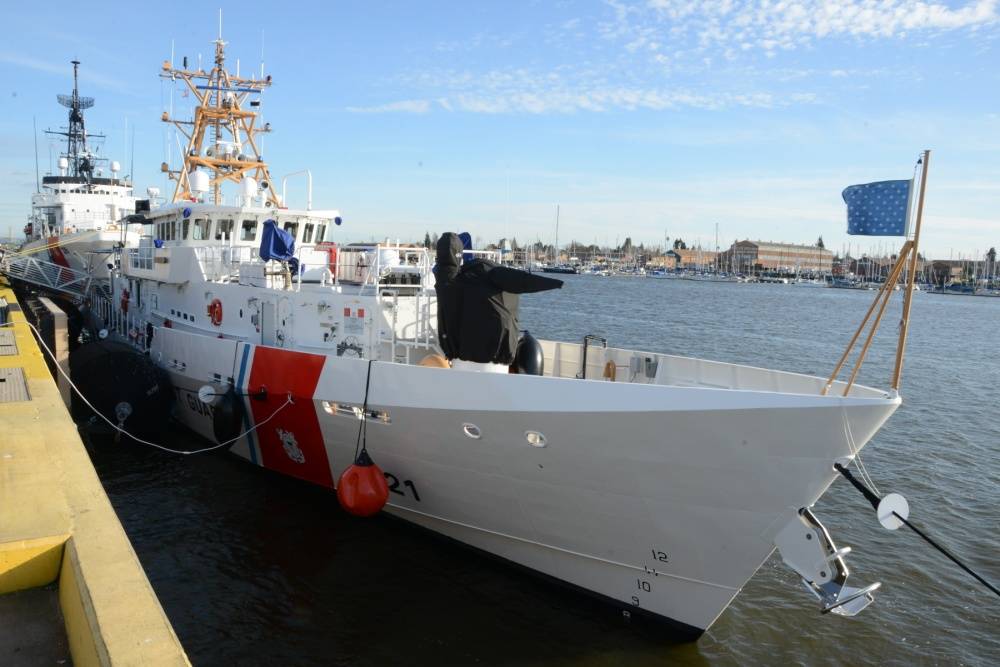Today we usher in a new era for the Coast Guard in Alaska. At a ceremony in Ketchikan, Coast Guard Cutter John McCormick will officially enter the fleet. It is Alaska’s first Fast Response Cutter and the first to be stationed west of the Mississippi River.
It is no coincidence that Alaska is now home to our first West Coast Fast Response Cutter. This modern asset is specifically designed to meet the most challenging requirements of its time and will bring more capabilities to our missions in Alaska – from increased endurance, to faster speeds, to more integrated systems.
When you set foot aboard a Fast Response Cutter, you are accelerating four decades forward from the ship it has replaced.
At 154 feet, the Fast Response Cutter has incredible improvements over its predecessor. The longer length makes for a more stable platform to conduct operations – from launching small boats in heavy seas to remaining at sea for longer periods of time.
This new cutter is also capable of going further – increasing annual distance capabilities from 1,853 nautical miles to 2,500 nautical miles. As a result, Alaska will see a 19 percent increase in patrol boat operations. The Fast Response Cutter also achieves speeds of nearly 30 knots for longer periods of time, besting the cutter it is replacing.
Paraphrasing the ship’s commanding officer, the ship can go farther than before and get there faster than before. This ship provides the kind of service Alaskans deserve.
While we’re commissioning this Fast Response Cutter today, it is the first of six of its kind that will call Alaska home. These cutters and their crews will truly make an impact, getting our men and women on scene when Alaskans need us most.
Cutter John McCormick will operate within the U.S. Exclusive Economic Zone where its crew will help protect Alaska’s commercial fishing and seafood harvesting industry; an industry that brings in more than $6 billion of revenue to Alaska. With more than half of all fish caught commercially in the U.S. stemming from Alaska’s fisheries, this cutter’s crew protects fish stocks vital to not only the state but also for our nation.
Keeping this fleet safe is priority number one. With its enhanced capability, the cutter’s ability to search for and save mariners, provide evacuation or ensure safe transport are some of the capabilities that this ship will bring to bear.
Many Alaskans have seen Coast Guard missions firsthand. But we’re also a global force, frequently serving on all seven continents. Deploying the world over, our men and women secure borders, ensure national security and ensure more than $4.5 trillion in economic activity can move through our waterways. While this ship’s capabilities are new to Alaska, the Fast Response Cutters have already proven their mettle for our nation.
Off the coast of Puerto Rico, one Fast Response Cutter responded to a cruise ship fire and coordinated the offload of more than 500 passengers in what would become the second largest Coast Guard rescue operation off one ship – ever. In the Caribbean, our Fast Response Cutters are essential in our campaign against illicit actors who threaten rule of law and regional stability. It is a Fast Response Cutter that holds the record for the second largest cocaine seizure for any Coast Guard platform in 2016. And it was our Fast Response Cutters and their steadfast crews that remained underway during Hurricane Matthew to relay critical communication to mariners. Only the most capable platforms would be able to stay underway in the face of such a powerful storm.
This Fast Response Cutter’s namesake is Boatswain John F. McCormick who received a Gold Lifesaving Medal for rescuing a fellow crewmember in the spring of 1938. Channeling McCormick’s lifesaving legacy, this crew intends to do the same as they serve Alaskans and our Nation. At the center of this new ship’s crest is the motto they’ve chosen: Stewards of the Last Frontier.
For a century and a half, the Coast Guard has patrolled Alaska waters. The Sentinel-class Fast Response Cutter is the Coast Guard’s next generation of patrol boat. It’s a game changer for Alaska and we could not be more pleased to have this newest, game-changing asset call Southeast Alaska home.
Admiral Charles Michel is the Vice Commandant of the U.S. Coast Guard.
Admiral Charles Michel is the Vice Commandant of the U.S. Coast Guard.

